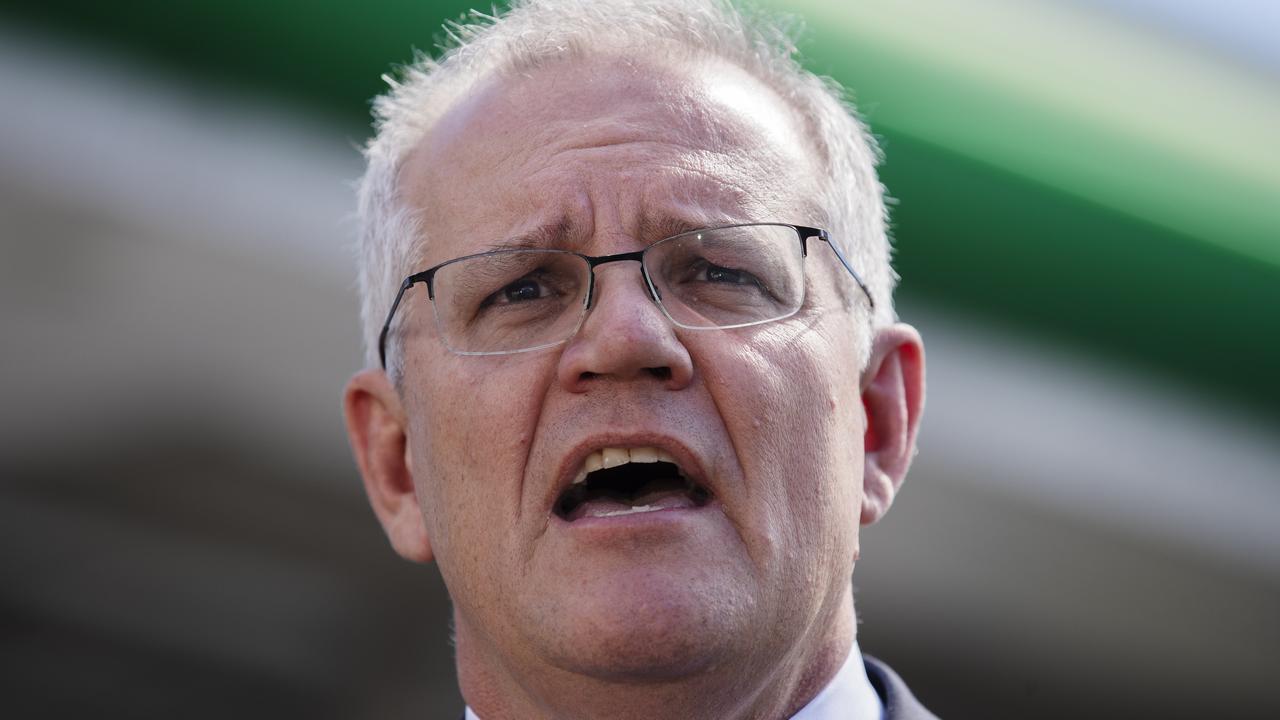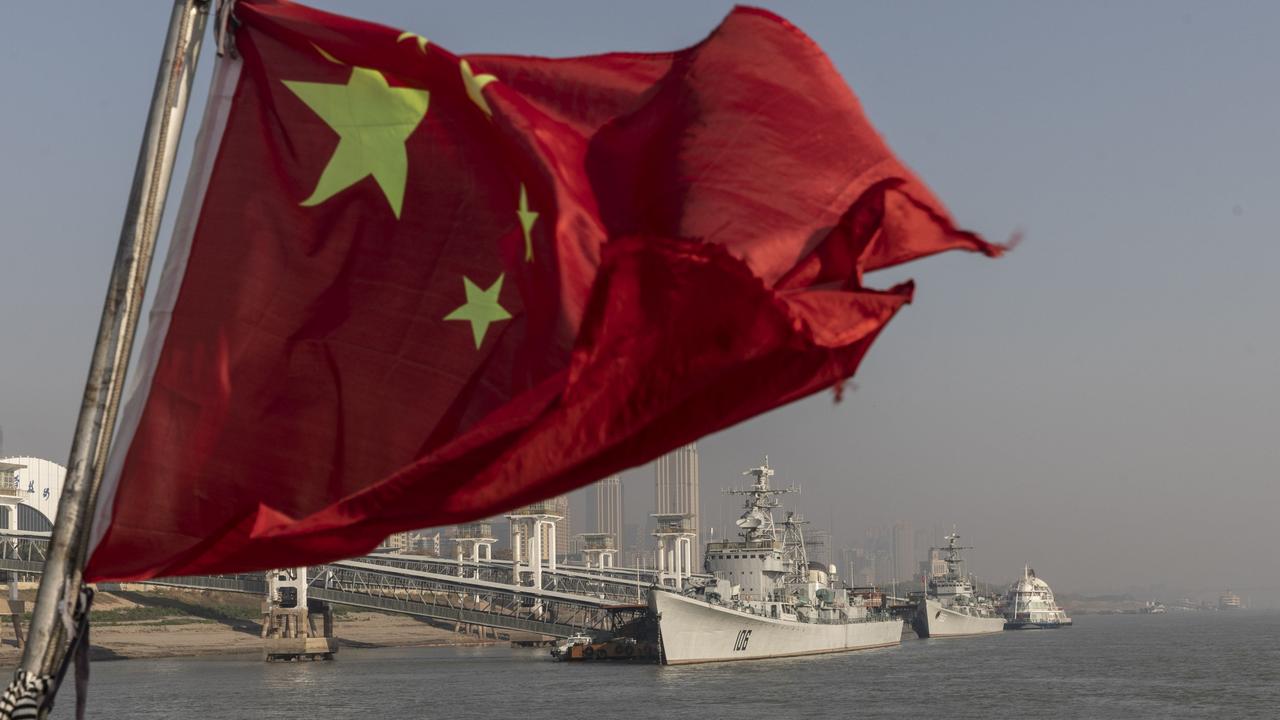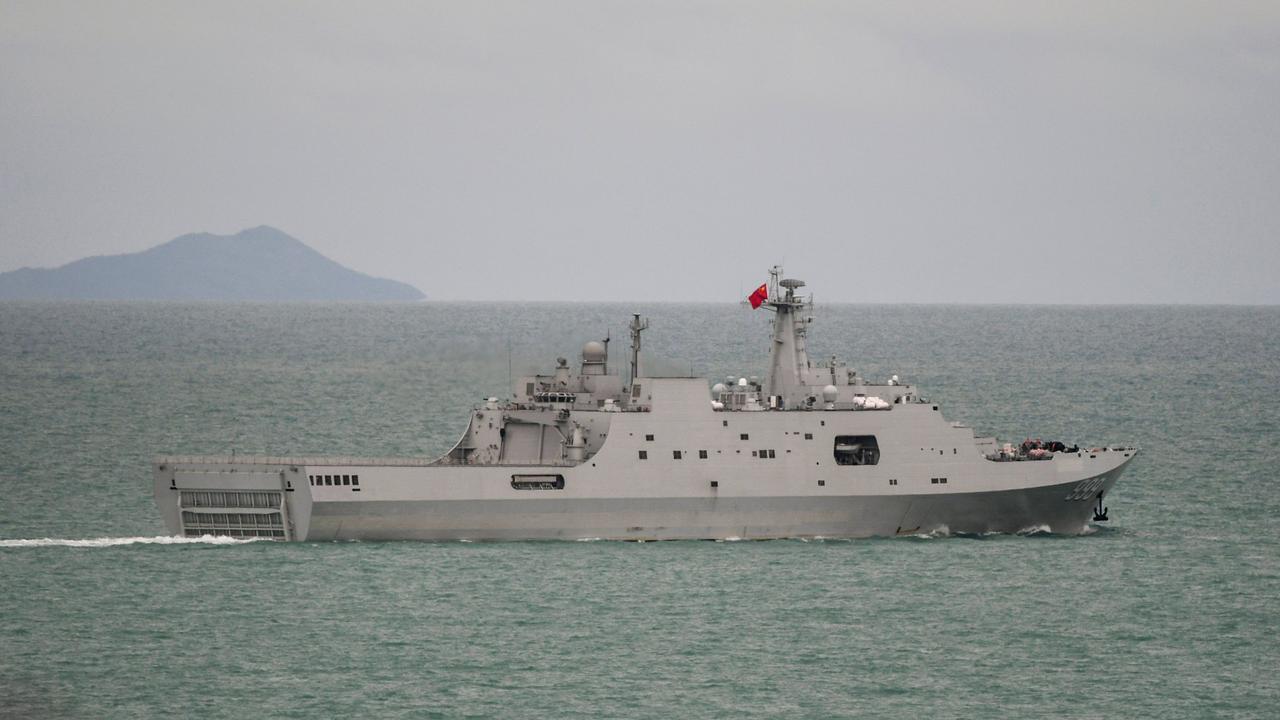Australia to work with US and UK on cutting edge hypersonic weapons as part of AUKUS
An unsettling new warning has been issued as Australia agrees to work with the US and the UK to develop cutting-edge weapons.
Australia has agreed to work with the US and the UK to develop cutting-edge hypersonic and anti-hypersonic weapons — as all three spoke of an “unwavering commitment” to an international system which “respects human rights”.
The move comes after Australia was warned to prepare for the possibility of something “much more serious than even what’s happening in Ukraine”.
Senior analyst at the Australian Strategic Policy Institute, Malcolm Davis warned that the splurge in defence spending shows “we’re building up to something rather major in the coming years” in the Asia-Pacific region.
“We’re looking at what China is doing in terms of its intentions with Taiwan, in particular in the second half of this decade, and I think we have to prepare for the possibility of major power war in our region, with China, in the second half of this decade,” he told 3AW.

“So you are seeing a spike in defence spending and acquisition of new capabilities to prepare for that.”
Mr Davis said Darwin would be a “major target” in an attack from China.
“There’s a lot of military infrastructure up around here,” he said.
“Australians do need to open their eyes and recognise that there is a real and increasing risk that some time within this decade we could be facing something much more serious than even what is happening in Ukraine at the moment.
Australia to work on hypersonic weapons
Prime Minister Scott Morrison, along with Boris Johnson and Joe Biden issued a statement on Tuesday as part of the AUKUS military pact announced last year.
The pact was formally centred around submarines, but overnight the trio committed to “commence new trilateral co-operation on hypersonics and counter-hypersonics, and electronic warfare capabilities, as well as to expand information sharing and to deepen co-operation on defence innovation”.

In a statement, the AUKUS leaders said: “We reaffirmed our commitment to AUKUS and to a free and open Indo-Pacific. In light of Russia’s unprovoked, unjustified, and unlawful invasion of Ukraine, we reiterated our unwavering commitment to an international system that respects human rights, the rule of law, and the peaceful resolution of disputes free from coercion.”
They added: “We also committed today to commence new trilateral co-operation on hypersonics and counter-hypersonics, and electronic warfare capabilities, as well as to expand information sharing and to deepen co-operation on defence innovation.

“These initiatives will add to our existing efforts to deepen co-operation on cyber capabilities, artificial intelligence, quantum technologies, and additional undersea capabilities.
“As our work progresses on these, and other critical defence and security capabilities, we will seek opportunities to engage allies and close partners.”
The leaders also said they were “pleased with the progress” Australia was making in the development of nuclear-powered submarines.
Russia and China’s weapons
The move comes not long after the Russian military has boasted about its use of the Kinzhal hypersonic missile in Ukraine, the first time it had been used in combat.
And, a report released yesterday by the Australian Strategic Policy Institute (ASPI) state that China has already developed a wide range of lethal cruise missiles that would present a catalogue of problems to Australian and Allied naval forces.
Stream your news live & on demand with Flash. From CNN International, Al Jazeera, Sky News, BBC World, CNBC & more. New to Flash? Try 1 month free. Offer ends 31 October, 2022 >

Dr Sam Goldsmith, who authored the report, said these weapons, in some cases, can travel at hypersonic speeds before taking out their targets.
“Typically, advanced anti-ship cruise missiles (ASCMs) have long ranges and advanced guidance systems and in some cases might incorporate stealthy design features, decoys and countermeasures to assist the missile in successfully penetrating sophisticated air defence systems,” he said.
Dr Goldsmith said ever since the 1995–1996 Taiwan Strait crisis, the People’s Republic of China had heavily invested in its multibranched armed forces – the People’s Liberation Army (PLA).
“For over two decades, the PLA has consistently acquired, developed and surreptitiously obtained new technologies and capabilities, including a prodigious array of increasingly sophisticated ASCMs, such as the supersonic sea-skimming YJ-12 ASCM, which has a range around 400–537km,” he said.
“The PLA has also invested in capabilities to sustain ASCM maritime strike operations even under high-intensity battle conditions against a technologically advanced power such as the US.”
Dr Goldsmith said these weapons would provide four major challenges to Australian and Allied naval forces.
They could be difficult to detect and counter. They could “saturate anti-air defences”, sink ships or leave ships with severely depleted missile magazines.
Finally, they could be picked up by terrorist groups like Hezbollah who have previously accessed the devastating technology.

Australia ‘napping at the wheel’
Dr Goldsmith said the Royal Australian Navy’s current fleet was unlikely to be able to deal with the threat posed by the new weapons today, let alone what they could do in the 2030s and 2040s.
“An even greater concern is that the ADF doesn’t possess the very long-range strike capability that would be needed to make any substantial contribution in a high-intensity regional war against a technologically advanced and sophisticated adversary,” he said.
He said Australia has been caught “napping at the wheel”.
“Ten years ago was the time for change, but now wholesale changes are well overdue,” Dr Goldstein said. “Decades of unchallenged US strategic primacy have arguably shielded Australia from the consequences of complacency and chronic under-investment in Australia’s national defence.”
ASPI, which is funded by the Department of Defence, foreign governments and military contractors, has faced accusations in the past of fomenting anti-China hysteria, to the alleged benefit of its benefactors.
Government fast-tracks long-range weapons
Earlier this week it was revealed Australian fighter jets and navy vessels will be armed with new long-range strike missiles years ahead of schedule under a new $3.5 billion fast-tracked package.
Speaking on the Today show on Tuesday, Defence Minister Peter Dutton said that Australia hadn’t, in fact, been “caught napping” when it came to defence preparations – rather the government had been “flat out” in its response.
“The world has really been shocked by what we’ve seen in Europe – nobody was predicting that even two or five years ago – and we’re also very worried about what’s happening in the Indo-Pacific,” he said.
“China is on a course in relation to Taiwan. They’re amassing nuclear weapons. We want to make sure our country has the capability to deter any active aggression against our country.

“It’s (a) very serious and real situation and we need to be real about what’s happening over the next few years or the next decade.”
Mr Dutton said there were now 20 points of military presence in the South China Sea and that the People’s Liberation Army was amassing a “huge number of ships” in the region.
“This is not something we’re talking about in the 2040s,” he said. “There’s a potential for conflict in the next couple of years.”
Under the new defence capabilities announced by the government, it says ships and jets will be equipped with missiles that will be able to strike targets up to 900km away.
The government says the missiles for the jets will arrive three years ahead of schedule and missiles for the navy five years ahead of schedule. Hi-tech sea mines will also arrive three years earlier under the package.




